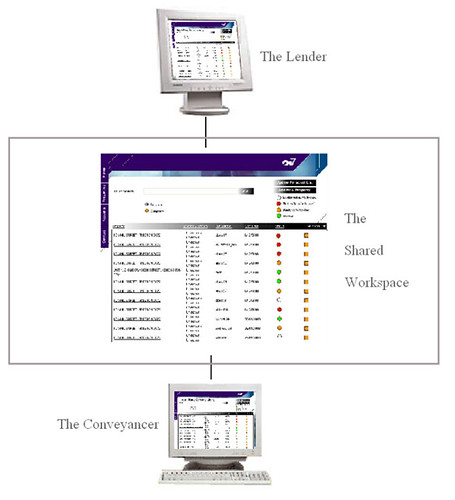Communication & Co-operation
Communicating with others using various aspects of the World Wide Web has become commonplace. Most of us use e-mail daily, many are members of specialty-group forums, and more and more of us are making and finding friends on web portals such as Facebook and My Space.
Legal and conveyancing professionals have probably not been the quickest to adopt many aspects of the digital world. I recall a story (supposedly true) from my first law firm. The previous decade the managing partner purchased a personal computer for word processing. It was probably among the first in town - he was a very astute man who saw massive potential to this new technology. His assistant promptly resigned stating “I am not going to waste time with some new fad that will be gone in a year”. While this is one exaggerated perspective, as a profession we do tend to regard technology with some resistance.
Property work has at its core a co-operative need between practitioners and lenders, and we achieve that today already using technology. The telephone, facsimile and e-mail now all play a part alongside “snail-mail” as facets of the communication technologies used by us to achieve the result for the client, who is relying on us and her or his lender for the desired result.
Unification
The internet provides the ideal platform for the unification of these separate communication systems. A purpose-designed web platform can create an environment where lenders and conveyancers can communicate in a standardised way, each seeing and receiving what it needs to progress their work.
Instead of a dozen major lenders with a dozen different ways of attempting to obtain their (in essence) identical requirements, a unified web based portal can allow communication that not only saves expenses such as postage, facsimile and telephone - the staff hours able to be saved are immense.
Shared Workspaces
The concept of Shared Workspaces is simple – design a system where the conveyancer can upload documents like contracts and transfers, and the lender can print (or save to its electronic file) those documents instead of writing to the practitioner, or telephoning and then the practitioner mailing or faxing etc. Simply put, it is a web page that is accessible by the conveyancer and lender for that transaction. That web page becomes their “Shared Workspace”.
A method of creating the Shared Workspace is needed, and this should be one where either the lender or the conveyancer can create it, and the system will know when another party is trying to join, and invite them in if appropriate. Couple this to a method of creating (or identifying already open) Shared Workspaces via a single process, and we have the makings of the first real 21st Century advance in the property settlement arena.

Shared Workspaces can combine all of a practitioners matters into a single page, and allow any filewith any lender to be actioned. While Shared Workspaces will allow many things to be achieved, the “killer application” is perhaps the readily identifiable status of a file: A conveyancer can see at a glance whether the lender has joined the Shared Workspace, and when the lender is ready to be booked. Consider the time spent on hold waiting to book a loan advance, only to find out that it is not ready to be booked. Not only has the practitioner lost valuable time, but the lender has wasted their time in taking those calls, and that time would be better spent getting those files ready in the first place! If in future the practitioner could see at a glance that the matter is or is not ready to book, then booking arrangements can only benefit.
With industry support gathering pace, this future is closer than you think.
Contributor Nick Spanninga 2009
No comments:
Post a Comment